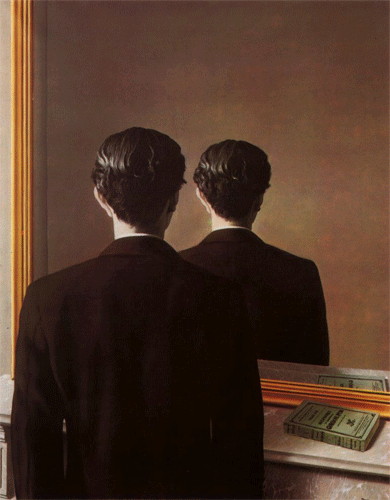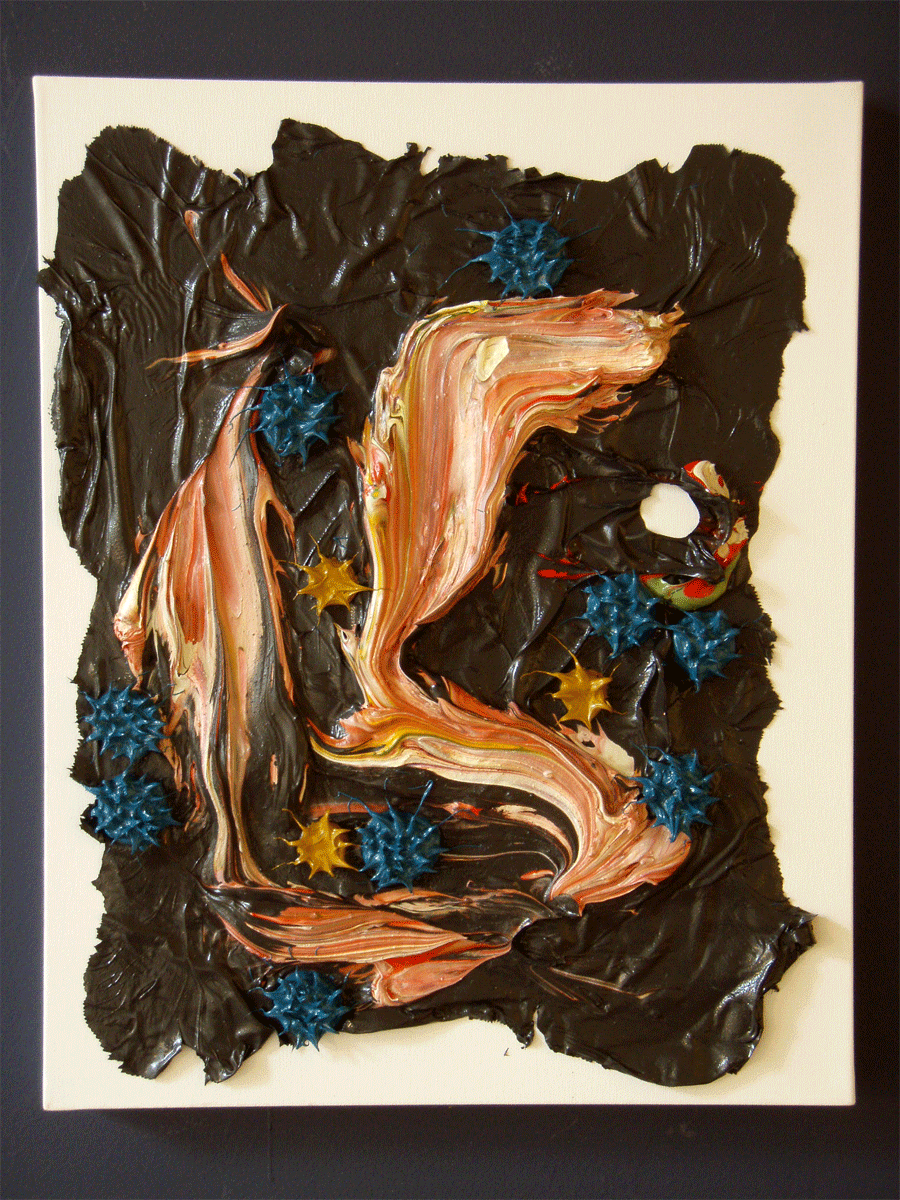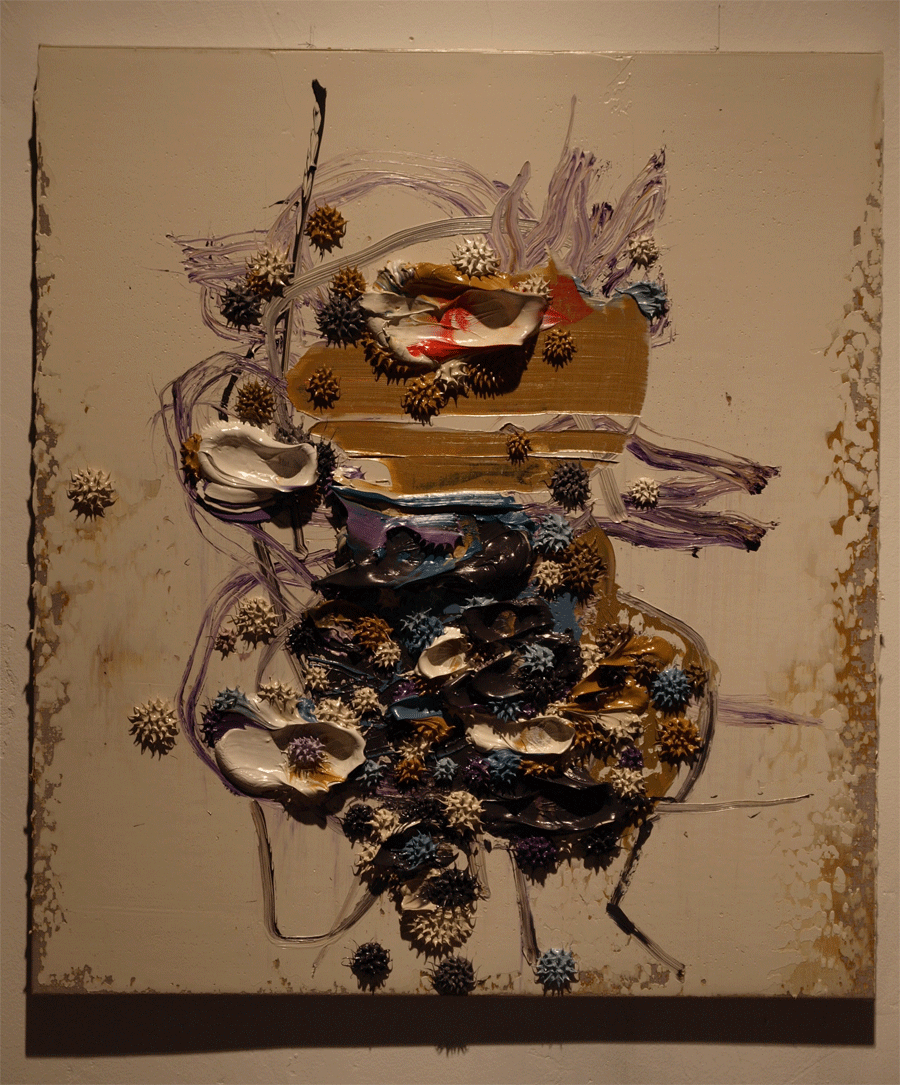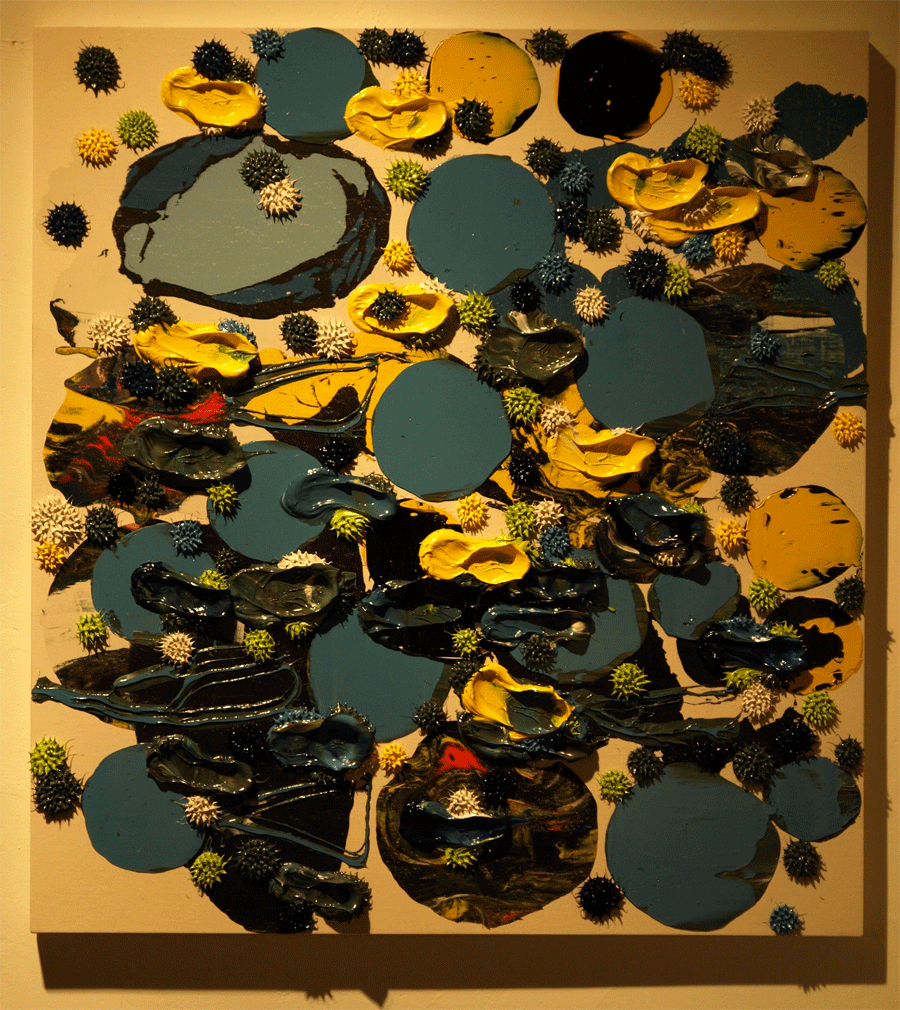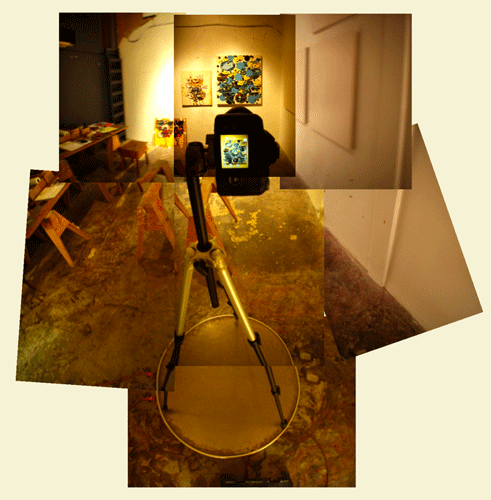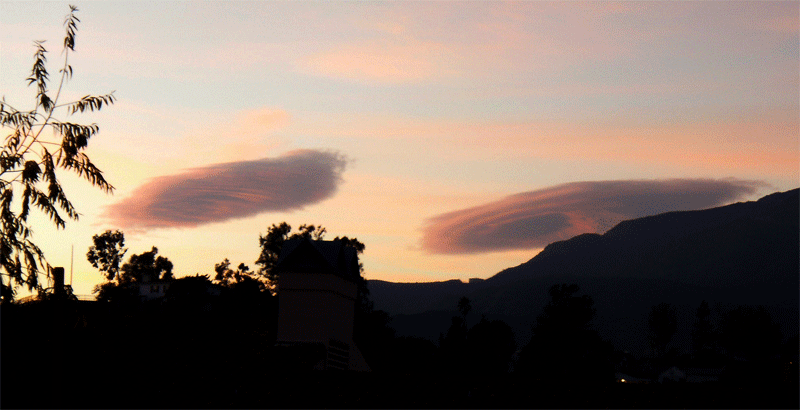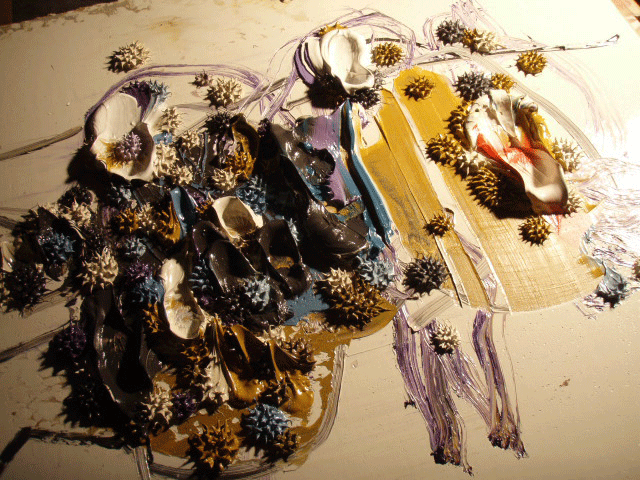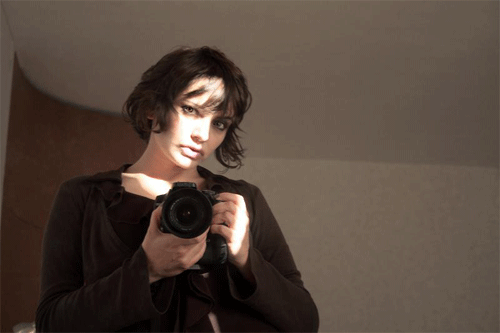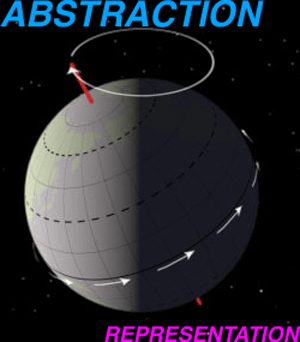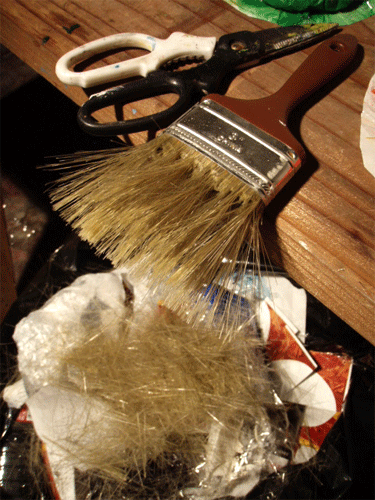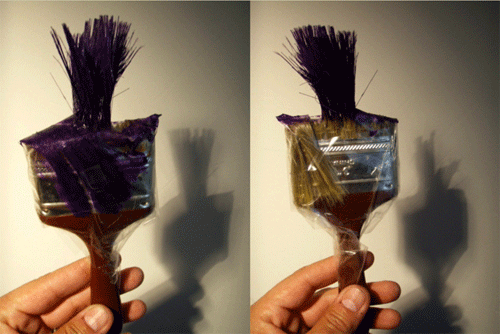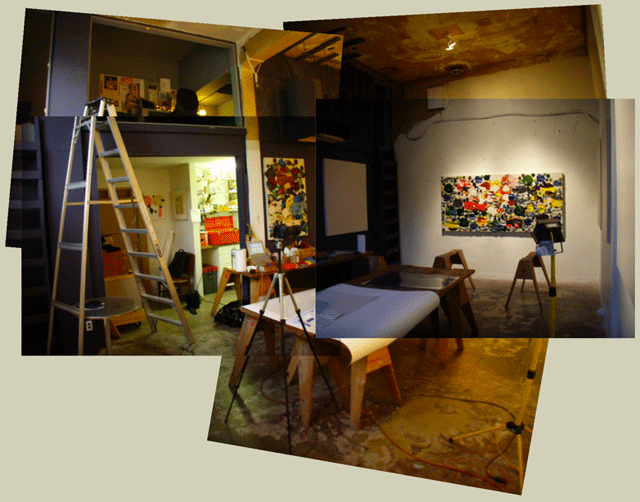January 30, 2008
I have been yours all along
So Tinha De Ser Com Voce (Tom Jobim)
No one can say how much love I have saved
Unaware it was all meant for you
You, it had to be with only you
It had to be for only you
Or else it would lead to more pain
My heart would retreat yet again
A love that's beyond the whole world
This love that I've come here to bring
A love like you've never seen
This love that I've come here to bring
A love like you...
You, your beauty was born out of blue
Please let me come close to this blue
Won't you let me search for my peace
By bringing your heart in my reach
If only you knew, as I do
That I have been yours all along
And that you were mine all along
That I have been yours all along
And that you were mine all along
(Lyrics by the singer, Mary Rose Bussard)
I'm paying attention to the way Bussard translated the Tom Jobim lyrics, alongside the subtitles to his son Daniel's rendition in the first video. Also touching, the original song sung by Elis Regina, as a young woman and older, her ecstasy in the latter nearly overwhelming her performance.
Translation is an interesting problem, especially when it comes to work like this. I'm thinking of the attention to issues of translation (in reference to coping with the problems associated with globalization) from Elkins and Relyea in those BAS podasts in the blogpost The healthy self..." It seems to me that translation of one (art) language form into another is something that requires resonance and empathy. Empathic resonance (I'm visualizing tuning forks, the resonant frequencies of each solitary fork vibrating together, translation in this case would be to build a tuning fork --of another material-- that will vibrate at the same frequency as the original). Without resonance, the attempted translation can gutter ball into either mere transliteration or misrepresentation. There is also this thing about the ability to translate cultural norms that may not be present in both cultures... unless there is a universal humanity that is captured in the prism of each culture. To refract the contents of one facet through another is to lose the precision of meaning but refraction itself (translation) relies on a totality of meaning, the hotly contested ghost we call human nature.
January 29, 2008
Soul Shards
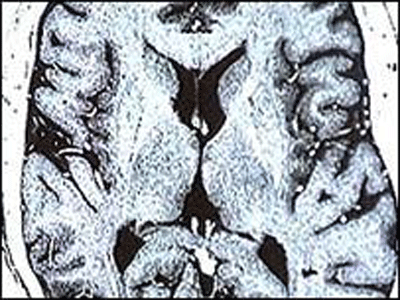
I have just received a copy of Douglas Hofstadter's "I Am A Strange Loop". A couple of excerpts:
And another:The Mirage One day when I was around sixteen or seventeen, musing intensely on these swirling clouds of ideas that gripped me emotionally no less than intellectually, it dawned on me -- and it as ever since seemed to me -- that what we call "consciousness" was a kind of mirage. It had to be a very peculiar type of mirage, to be sure, since it was a mirage that perceived itself, and of course it didn't believe that it was perceiving a mirage, but no matter -- it still was a mirage. It was almost as if this slippery phenomenon called "consciousness" lifted itself up by its own bootstraps, almost as if it made itself out of nothing whenever one looked more closely.
Collectors who buy art objects are missing the point. Better to be collecting artists instead. That's where the true value of the art object comes from.Soul Shards One gloomy day in early 1991, a couple of months after my father died, I was standing in the kitchen of my parents' house, and my mother, looking at a sweet and touching photograph of my father taken perhaps fifteen years earlier, said to me, with a note of despair, "What meaning does that photograph have? None at all. It's just a flat piece of paper with dark spots on it here and there. It's useless." The bleakness of my mother's grief-drenched remark set my head spinning because I knew instinctively that I disagreed with her, but I didn't know how to express to her the way I felt the photograph should be considered.After a few minutes of emotional pondering -- soul searching, quite literally -- I hit upon an analogy that I felt could convey to my mother my point of view, and which I hoped might lend her at least a tiny degree of consolation. What I said to her was along the following lines.
'In the living room we have a book of the Chopin ?tudes for piano. All of its pages are just pieces of paper with dark marks on them, just as two dimensional and flat and foldable as the photograph of Dad -- and yet, think of the powerful effect that they have had on people all over the world for 150 years now. Thanks to those black marks on those flat sheet of paper, untold thousands of people have collectively spent millions of hours moving their fingers over the keyboards of pianos in complicated patterns, producing sounds that give them indescribable pleasure and a sense of great meaning. Those pianists in turn have conveyed to many millions of listeners, including you and me, the profound emotions that churned in Fr?d?ric Chopin's heart, thus affrding all of us some partial access to Chopin's interiority -- to the experience of living in the head, or rather the soul of Fr?d?ric Chopin. The marks on those sheets of paper are no less than soul-shards -- scattered remnants of the shattered soul of Fr?d?ric Chopin. Each of those fragments have the power to bring back to life, inside our brains, some tiny fragment of the internal experiences of a human being -- his sufferings, his joys, his deepest passions and tensions -- and we thereby know at least in part, what it was like to be that human being...
*
*
*
(All this soul talk, maudlin stuff... pues, nada.)
Post Script:
Up against all of this soulful talk, check this out:
Owens' larger concern seems to be an anxiety about authenticity. Are you the real you? But what is the real you? Were you, you, when you 10 years old? 20? 45? Were you the real you before you had graduated college? Were married? Were a parent? Were you more real when you were shy before you "came out of your shell" after joining the basketball or debate team? Are you the real you when you drink coffee to boost your concentration in order to finish that new sales report? Or are the real you when you take Viagra to boost your sexual performance? Turn the question around: are people who choose to use Viagra, cosmetic surgery, hair-coloring, propranolol to overcome stage fright, fakes? A strong case can be made that people who take advantage modern technologies are seeking to become more authentically who they believe themselves to be. Demands for authenticity turn out to be just a way for other people to impose their views of your proper social status on you.
Owens concludes that religious "beliefs may all be delusions but, as technology advances, the need for such fixed points becomes more, not less pressing." However, as we've seen, such "fixed points" don't really exist. Owens wants to liken the human journey to following the signposts of a well-marked Rand-McNally atlas. Instead, humanity is a team of explorers who constantly push forward into undiscovered territories. With many false starts and dead ends, we chart the map of the future as we go along. Like all analogies, the map analogy is inexact?we not only make the map, we also create the landscape of human possibilities through which we travel.
Some Paintings
A brisk walk through LA Weekly's "Some Paintings" 2008 Biennial at Track 16 Gallery, Bergamot Station, Santa Monica California.
(I love the coincidence of the audio of the zooming plane --the Santa Monica airport is nearby-- as the camera zoomed into Roger Herman's landscape at 3:10. Sweet.)
January 26, 2008
The healthy self, indeed.
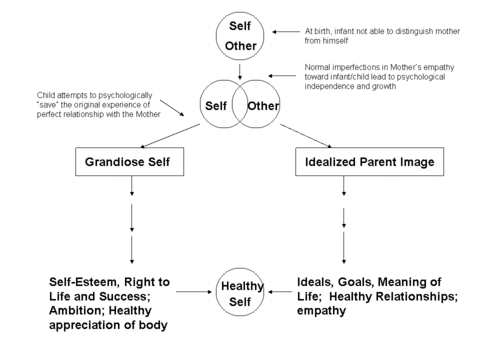
The artworld is split between a market identity (art fairs, etc) and a revolutionary identity (critical theory, Marxism, etc.). What remains/is lacking is a successful integration of the two.
*
*
*
This week in the studio has been destroyed by the Art LA 2008. I have a painting in progress, and without a few days of solitude ahead, I find it hard not to pause at a point where an interruption will do the least amount of damage to the process (most of the flat work has been done -that is, paint applied and scooped up- and the next stage that is impasto starts the clock in earnest). I'm about to head out to the fair, I promise to snap a few pics when I get there. But before I go, I thought it would be interesting to post a few notes beforehand regarding the growing marketplace and the fading world of theory/criticism/etc.
Let me restate the idea that I scribbled down to capture the thrust of this blogpost, sorry to be blunt but there's little time to add flesh to the bone:
The artworld is split between a market identity (art fairs, etc) and a revolutionary identity (critical theory, Marxism, etc.). What remains/is lacking is a successful integration of the two.
Jumping to my conclusion, I aim to reintegrate these two forces. I think that society at large is suffering from a schizoid wound, we have separated into right/left camps. The most interesting and most responsible way forward is to re-member the body politic/aesthetic.
Politically, I am hard to categorize. Usually, people on on the far left think I am on the right, and people on the far right think I'm left. I am rather comfortable in the center, even when it is extremely uncomfortable for me to discuss politically charged issues in our art world. Civility is hard to find sometimes in our civilization. I would like to think that this state of mind of mine is resonant with my genetic legacy as a half breed, mulatto, heterogenaic, mongrel, etc: my mother was born in the Quezon City and my father in Galveston... (but I can't help but question the assertion every time I assert it).
Generally, I believe that politics is a private matter and proselytization is as ugly and as unwelcome to me in politics as it is in religion. But sometimes the subject is impossible to ignore. Therefore I proceed here with much caution and an intention of good will to all across most of the political spectrum.
I would like to submit to you two sources for your reading/listening pleasure:
Here are some of my favorite broadcasts from Bad at Sports that address this revolutionary identity issue and the separable world of the art fair (I scribed a few notes in haste to mark a trail):
Episode 119: James Elkins on Globalism
10:30 There is no uniform art world... in the art world, people get away with saying very trivial things about their nationality...
12:50 ...worlds in collision...
13:30 artists as representatives of the local... the idea of being a global artist is a wrong thing because it represents the West... it is a new face on cultural imperialism... international artists expressing international airport waiting lounges...
16:00 (...this segment sent me back to reading my Jameson)
21:00 Translation, an echo of the conversation with Brian Holmes, BAS#104
24:30 Jeff Koons as the emblem of vacuity...boutique multiculturalism as homeopathic pluralism...
26:00 What is art history? Who is it for? Is it failing us?
28:30 ...art criticism itself... there aren't strong regional differences that are stable in it, so these kind of questions don't get asked. People don't say: 'Oh, but in Hungary they write this weird stuff called art criticism but no one can think of it as art criticism, we think of it as poetry.'..."
29:25 Duncan's brilliant question: What is art, then? Do all cultural communities and cultural groups think of art the same way (as us in the West) and if not, how can we all create an art history that is part of the same thing (by "thing", he must mean the West and what is spontaneously considered "the dialog") and Elkin's brilliant response: if you go back into the Middle Ages and before, you find yourself using concepts of art that don't really apply...
31:28 Global art fair standards: "they know what a gallery is, etc..."
35:48 Art since 1900... the commitment to resisting the commercialization of the art world... the anti-aesthetic... those problems pertained to the problems of post-structuralism are dissolving in the huge ocean of art fair culture... nausea of the lack of resistance against the avalanche of art in the fairs...
42:10 grit in the system... non-oppositional practice... Jameson: good thing about Globalism, the pluralism of practice... the sociologist from Mars... symptoms of globalization...Episode 104: Brian Holmes with Lane Relyea
14:30 A capsule history of anti-globalism in the 90's
16:00 Nice mock from Lane.
31:00 Brian Holmes' contribution to anarchism... how Libertarianism has roots in the "disruptions of society" in the 60's and 70's... the ambition of the Frankfurt School and B.H.'s desire to revive it... how contestatory or revolutionary theories became part of the very fabric of a.. certain kind of opportunism... what is called Neo-Liberalism includes a strong strand of Libertarianism, which is a right wing anarchism...
52:00 Duncan busts B.H. on his subversive intentions using the "reading group" as a Trojan Horse "...to build a robot army..." This illustrates how the desire to use the romantic aspect of collectivist politics while simultaneously declaiming the destructive potential. Reylea: "The form of the informal reading group has been a fashion or fad since the late 90's..." (a great history lesson follows)
1:00:00 How opportunism creeps into revolutionary movements (associated roughly with think tanks of all types)... Claire Pentecost defends the needs for a "solid network of research"... the opportunism of style "I find it boring..."
1:06:00 Schools as social networking spots... what you get from school is a network... B.H. on the defensive, calling Lane's presentation of social networking as "boilerplate"... "People who don't agree have become a detail..." (he must mean "trivial")...
1:11:00 How does one appropriate network socializing modes for un-instrumentalizing potentials (what language/jargon we're using!)... B.H.'s answer to have an "existential core"... if you have any kind of style, whether it is writing, speaking or painting, you can always have a success in society..." (WOW, that's easy for you to say!) "... the point is to find a way to cooperate with people over an extended period of time..." (too bad that the history of socialism is a history of failed collaboration)
1:15:00 The agenda of his blog, Continental Drift. Fast choppy rhythm=Control SocietyEpisode 39: Lane Relyea part deux!
35:19 Duncan: excess verbosity in art theory... artists as intelligent agitators
36:30 Criticism has withered, problems with theory rooted in the 80's
45:30 Freedom over production
49:30 Postmodernism relied on a consolidated media, but things changed... hegemony became collage material... (a great comparison between Salle and Tillmans)... the paradigm of urban outfitters and prosumers... but the artists are too deep to respond...
57:00 There has to be a new theory... a call to bury the 80's artists... teh Oedipal turn: Kill your father... Why haven't we killed our fathers yet?
59:20 Damn the market... a call for revolution
1:00:20 Agree on a common enemy that we can all hate, and hit that enemy will all it's force...
Episode 32: Lane Relyea
Most of the dialog in these links should be familiar to art world denizens. What follows might not be, but it should.
Here's a whopper of a blogpost by Dr. Santy, aka Dr. Sanity. Pat Santy is part of a group of psychologists (associated with Pajama Media) who are fighting an information war in defense of Western Civilization. For most my friends in the art world, please give it a read, even though it probably appears to run counter to everything you hold dear.
A snippet:
...it occurs to me that if socialism cannot die because its mythology is seared into the psyche of the individual; captialism, the bane of socialism (just as socialism is the bane of capitalism), also cannot perish for precisely the same reason--each one is the political expressions of one of the two fundamental developmental lines of the human psyche....When not pursuing the objects of their narcissistic rage; the same rage-filled and aggressive individuals and groups easily submit to the will of Allah, God, the religion, the government, the collective, or the despot of the day, as they are filled with the desire for a reunification of the perfect other.
It has been said that the 20th century was the ?century of the narcissist?, but the 21st is well on its way to outdoing the horrors of the past, as a seemingly never-ending epidemic of malignant narcissistic rage and idealism--both caused by a defect in narcissism and both in turn combining to crush the human spirit--all for the purpose of serving the self-aggrandizing vision of the few.
It was a big mistake to think that when the West was victorious in the cold war; and when all the defects and deadly outcomes of socialism and communism were exposed, that it was the end of the matter. Like a zombie brought to pseudo-life by some mysterious cosmic process, eating the flesh of the living, socialism never was completely dead. In the same way, no matter how many tomes are written to discredit religion or a belief in God, it will not make the fundamental psychological need of homo sapiens to yearn for the perfect "other."
But without the mitigating influence of the grandiose self, these utopian fantasies have a way of devolving into scenes from "The Night of the Living Dead."
The task of the Free World in the 21st century is not only to "resolve the ideological debates of the Cold War", it is undo the narcissistic psychopathology that continues to strangled human potential and freedom all over the planet.
Parallel Cities is an abiding thought of mine, an address to contemporary city planning, an offer of an urban schema where the city fabric at large is the domain of private (car) transportation and islands of pedestrian communities are the domain of public (mass transit on a light rail scale) transportation. This seemed to be an anodyne idea at the time, but when I first tested it against my peers (in the days after undergraduate school -see Early Los Angeles), it was met with much resistance. Similar to my experience of the political dimension, my interlocutors at that time spilt between two poles, each taking me to task for crimes of apostasy. Defenders of human scale were revulsed, my anarchist pals thought I was a bit sentimental. I've been told that I am stubborn, but few of the critiques at that time seem to have risen much above the plane of the competitive elbow. Imagine my satisfaction when it became apparent that the art world traffics in parallel cities too, each mutually unaware that the separable worlds of the art marketplace and art of letters are natural compliments rather than natural antagonists.
The big question is how they fit together... and it is even more of a moral question when one ponders the consequences of total war of one against another, which is where we are tending at this time it seems.
By now I hope that my proposition is clear; that the urbanistic model of Parallel Cities also integrates well the Parallel Cities of our art world: where the art world as a marketplace at large is the domain of private transactions and islands of revolutionary theory is the domain of utopian dreams. This is an issue of scale and plumbing (how things go together), that by mitigating grandiosity in this way, one can save theory from itself... so that theory can soar to its heart's content on one hand... and on the other, to be able to establish market value from a multitude of independent negotiations, thus lining the circumstances (as a bird lines a nest) where art can exist at all.
Implicit within this scheme is the relation of limited and unlimited domains. At first glance, the unlimited option seems to be more favored one. But unbounded utopia seems to be destructive in all realms, especially the political if not the academic too. Bounded utopias. Contrary to conventional wisdom, to delimit utopia is to give it life, as biological cells are enveloped by walls and membranes, as we are bounded by skin. Anthropologically, we have evolved only recently and tribal social organization has a natural feel, it is a spontaneous desire. Problems start when the scale of social organization increases as it is wont to do in these modern times. Gentle patriarchs of a tribe of 100 or even of a thousand tend to become tyrants when the scale reaches past millions. Thus, the importance of the concept of freedom in civilization (see the ChinaTown Conversation at the end of Personal, Difficult Things), the only guard against a Hobbesian world of all against all.
This split in all worlds is the source of our malaise, Democrats vs Republicans, Neoliberalism versus Social Lberalism, Anarcho-Capitalism versus Marxism, the market identity versus the revolutionary identity of the art world. That the paradox of antinomies induces a catatonia (click the postscript of this post) is a symptom of our malaise, this insidious Mexican standoff between the commercial world and the world of letters in our art world.
The tonic for the ills described in the B.A.S. interviews might be Penny Aphorism #5:
Art manifests extrinsic value only once it has been invested with an intrinsic value in the first place. Therefore in the world of the marketplace, art is a mirror image of consumer goods, an inversion of the rule.Poorly expressed (words all a tangle), but its an effort to guard against all the fear of the soul suckedness of it all. It might be as simple as as hard as investing some intrinsic interest in whatever you are doing as a hedge against the rough and tumble of the marketplace. A path led by curiosity and wonder leads to a higher value however negotiated in a besotted world.
*
*
*

PostScript:
By the way, Art LA 2008 is over and the verdicts are coming in: mixed.
It was a great fair to some, a good fair to others and not-so-good to enough to harsh the post fair high. It started out with much promise: a smaller, smarter, tighter anti-mega-fair. But what began as a counter trend ended up a disappointment to enough people so that the future of the LA Art Fair is still a questionable proposition. The thing is, I think LA likes it that way. Too far away from Europe, one step removed from the market powerhouse of New York, a huge history of "meh", Los Angeles doesn't seem to have the stuff to host/hoist another charm on the global art fair circuit/bracelet. Too many galleries only broke even and too few earned bragging rights enough to flaunt effectively. This weakness was sniffed out early in the first day of the fair by savvy client/galleries when it became clear that the surge of serious collectors was too weak to sustain a successful art fair.
My assessment is threefold:
First but not foremost is that there was an over reliance on the selection of a tight VIP list of galleries and not enough focus on servicing a tight VIP list of collectors so that acquisition anxiety would infect the larger body collectorship and unleash the requisite zeal of competition that any voracious art fair requires. It looks like the organizers assumed that the VIP galleries would bring the VIP collectors, but evidently it didn't work that way.
Making sausage: that's the way I think of it. Delicious, but I don't want to dwell too long on the process.
Secondly, what is great about LA was not instrumentalized by the fair: LA has a huge population of emerging artists. Personally, I think any art centers' potential can be gauged by assessing the number of knuckleheads trying out new things. More knuckleheads, the richer the loam. And LA --with 8+ art schools and a magnet for recently graduated pilgrims of art schools across the country for the past twenty years-- is one huge happy stinking heap of steamy loam. Experiments, hard to categorize activity, dumb stuff, off the wall, wierdos, loam. Admittedly, this is not easy to incorporate into the souk of the art world, but let's brainstorm anyway: one could peel off some floor space like Statements or Positions or better: give the dialog pride of place in the fair (I'm thinking of the schema of a theater: the stage would be the dialog and the audience would be the gallery booths) ... alternatively: spotlight off site exhibitions and link them into the party circuit. Book signings and publication parties sponsored by the fair, you know what I mean. And why not mobilize the schools in this direction?
Thirdly and towards the point of this particular bloggpost: art fairs should be more robust in encouraging the theorists to theorize the nature of the marketplace and in turn allow the capacity for some self reflexivity of art work in that marketplace. To wit: there should be a tithing of art fair participants to energize the publication of journals/books/video that could be the fuel to symposia that is more prominently show cased in the party calendar. There was a strange yet subtle waft of pointlessness that stunk up the air of most parties in the fair this week. Simultaneously, art schools should study art fairs. Authors such as Adam Smith and Friedrich Hayek should be read alongside that of the Frankfurt School. Art schools who worry too much about career placement (remember Lane Relyea's biting reference to schools as "social networking spots"?) should also take care to arm their graduates with the conceptual background that informs the marketplace they will soon enter... instead of releasing them into a Wild West of an art world like a bunch of clueless blinking sitting ducks such as they currently are.
Re-membering a divided world is as simple as saying yes and letting that counter intuitive border dissolve. The marketplace needs the gravitas of theory and the egg heads need the levity and energy of barter.
All they have to do is say to yes to each other.
January 25, 2008
January 24, 2008
Strange Loops
Hofstadter's thesis about consciousness, first expressed in GEB but also present in several of his later books, is that it is an emergent consequence of seething lower-level activity in the brain. In GEB he draws an analogy between the social organization of a colony of ants and the mind seen as a coherent "colony" of neurons. In particular, Hofstadter claims that our sense of having (or being) an "I" comes from the abstract pattern he terms a "strange loop", which is an abstract cousin of such concrete phenomena as audio and video feedback, and which Hofstadter has defined as "a level-crossing feedback loop". The prototypical example of this abstract notion is the self-referential structure at the core of G?del's incompleteness theorems. Hofstadter's 2007 book I Am a Strange Loop carries his vision of consciousness considerably further, including the idea that each human "I" is distributed over numerous brains, rather than being limited to precisely one brain....especially in light of recent experiments replicating out-of-body experiences.
I'm thinking of expression and content in art, in my case, painting. Consider mapping this idea of a distributed self over a notion of a distributed meaning in artwork: "...emergent consequence of seething lower-level activity in artwork... the idea that each artworks' content is distributed over numerous subcontents, rather than being limited to precisely one subject..."
January 22, 2008
Titles
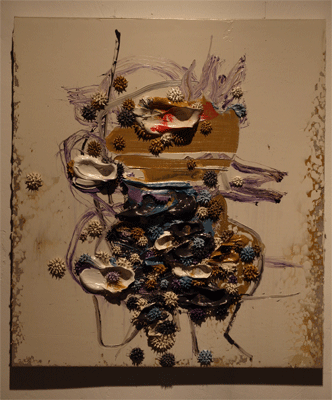
Precession
ww#285
2008
36"x32"
Oil on Linen over Wood Panel/Aluminum Stretcher
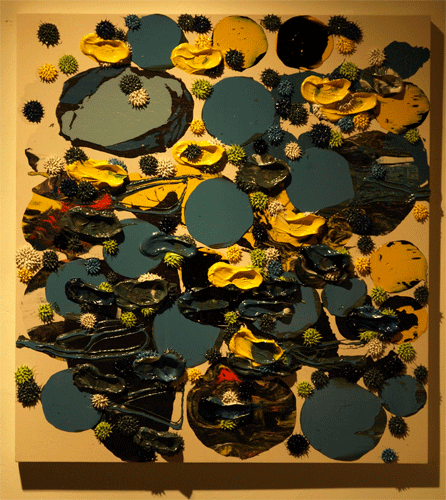
he will imagine true things
ww#286
2008
50"x46"
Oil on Canvas over Wood Panel
A Visit to Forest Lawn
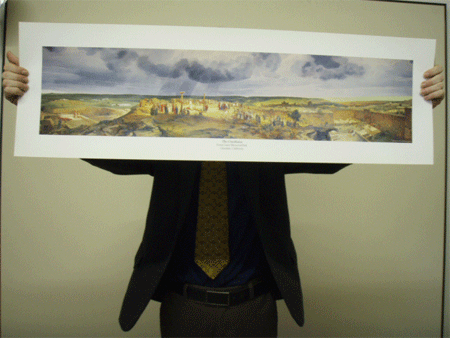
I asked Andrew Hahn (longtime friend, fellow Chinatown denizen) to give us a tour of Forest Lawn Memorial Park in nearby Glendale. I have managed to live here in Southern California for over twenty years without visiting the huge panorama painting by Jan Styka (I didn't want to make a pilgrimage for something that I thought was kitch on a monumental scale)... for shame, Dennis. So who else but Andrew* to give me a grand tour of the strangely huge painting and the entire theme park devoted to the afterlife in the hills overlooking Glendale?
ArtForum, Jan, 2003:
ANDREW HAHN PAINTS UNSOLVABLE MYSTERIES. HE creates them with the same meticulous objectivity that detectives employ to solve a crime. In Hahn's case, the evidence isn't a dead body or discarded bullet casings but rather the images popular culture generates to represent the horrific. His astonishingly skillful paintings of visual tropes used by television and movies to elicit the frisson of actual crime scenes are strange double takes on the visceral and discomfiting. They suggest frightening occurrences that have been romanticized in the name of entertainment and then revised back into images of pure uncertainty. Hahn calls them paranoid paintings, meaning that their potency lies in their untrustworthiness. For while he goes to extraordinary lengths to mimic the video grabs from news shows and "reality"-based TV programs like Dateline NBC and The New Detectives that form his source material, his interest in evoking the psychological threat that his models were designed to sweeten and negate leaves the veraci ty of these canvases' intense moodiness highly suspect and their success more than a little unnerving.
PostScript:
The CounterStrike footage was taken at ChinaTown's legendary CyberLan in 2002/3, something I wrote about in DIE BITCH, one of the first postings in this weblog.
PostScript 2:
Andrew sent in his essay on the Styka painting:
The Loved One
by Andrew HahnWhen was the last time a painting made you gasp? Jan Styka's 'The Crucifixion' is a high-percentage guarantee. In fact, it's the largest canvas painting in the world and you can find it at Forest Lawn Cemetery (or 'Memorial Park') in Glendale, California. Behind the largest wrought-iron gates in the world, drive up the narrow winding streets, past the flat bronze grave makers (or 'Memorial Tablets') that litter the green hills, to the last stop on the left, the Hall of the Crucifixion.
In 1996, I first witnessed Styka's ridiculously ambitious masterpiece. This piece is an enormous panorama, standing 45 feet high and 195 feet wide. It must be seen to be believed.
Following the painting's commission by Polish statesman and pianist, Ignacy Jan Paderewski, in 1894, Styka traveled to Jerusalem to prepare sketches, and to Rome, where his palette was blessed by Pope Leo XIII.
In 1897, his finished painting was unveiled in Warsaw to much awe and acclaim. Installed in the half-round, with the audience standing on a platform, it was shown throughout Europe before making its way to America, in 1904, for the St. Louis Exposition. After this, the painting was seized by customs when Styka's American business partners failed to pay the taxes for its return to Poland. The huge canvas was rolled around a telephone pole and put into deep storage. Styka never saw it again.
Heard about, located and purchased by American businessman and founder of Forest Lawn, Dr. Hubert Eaton, in 1944, the painting was brought to the Shrine Auditorium in Los Angeles, where it was mounted to a panel and given a gigantic gilded frame, before Styka's son Adam was summoned from Poland to restore his father's badly damaged work. The piece was originally entitled 'Golgotha', the Aramaic name of the site where the event took place, but Dr. Eaton changed it to fit his 'Sacred Trilogy' idea of the Last Supper, the Crucifixion, and the Resurrection (all three represented by artworks now within the confines of Forest Lawn, Glendale). The Hall of the Crucifixion was completed in 1951 as a permanent house for the painting and, later, the multimedia presentation that accompanies it. But just recently, 2005 til 2006, the hall was closed. In anticipation of Forest Lawn's centennial celebration, 'The Crucifixion' underwent maintenance restoration, during which time the theatrical display of the painting also underwent a change, to the detriment of the experience of the painting.
The painting itself depicts a moment just before Christ's crucifixion. His figure is situated in the center of the painting, his composed countenance directed to the sky, with a multiple tableau narrative that sprawls side to side, and a dramatic mood that is set by the foreboding cloudscape that alone takes up about half of the canvas, 22 x 195 feet of sky.
Historically, by the 1890s and for well over a hundred years before, Christian painting had become marginal and anachronistic by European standards. Styka was known for his portraits and historical paintings, but his four great panoramas are what made him world famous; two are Christian in theme, and two focus on Polish history; one of these is an epic battle scene that is, unbelievably, twice the width of the painting in question. The concepts that make up 'The Crucifixion' as an artwork are obviously influenced by Ideological Realism, a Slavic movement of the time, which touted art as for the people, not just the rich, with a moral attitude toward social education and a penchant for monumental compositions. Technically, Styka's painting displays the abilities of a master; but, for me, that is a given, and it's the size that counts most here, and the strange experience that's built around that size.
Upon entering the Renaissance-inspired Hall of the Crucifixion, through the small yet tall entrance of clerestory stained-glass, concrete buttresses and oak panels, and into the beautifully ambiguous theatre, which seats 800 but is usually empty, one is suggested to sit at the back in order to take in the enormity of the piece.
My initial experience was sitting alone in the middle of the back row as the auditorium fell into total darkness and the narration pushed through the sound system, an authorial voice telling the backstory of Styka's painting before beginning the represented story of that New Testament day. The audio played like the accompanying recording for a child's Sunday school comic book version of the story, with theatrical music providing emotional resonance. It was hokey in a way that was as eerily unsettling as the spotlights that pierced the darkness, sync-ed to hit the section of canvas that was being talked about and occasionally audibly acted-out (with centurion and crowd voices, horse noises, etc). The spotlights began on the far right and jumped around with the narration as my neck craned back and forth in order to follow the light hitting each tableau, and finally ended up in the center, on Christ standing alone. Then the entire painting was revealed in a full wash of light, astoundingly huge and detailed. But before long, the theatre fell into darkness again as the story continued beyond the painting's narrative, and I heard the sound of the spikes being driven into Jesus' hands and feet, centurions shouting, thunder rumbling my seat, Jesus' beleaguered voice questioning his Father, and his waning heartbeat that slowly subsided. Still in total darkness, I could vaguely discern the giant automated curtain moving as the second part of the story continued with the narrator's voice: the tomb, the angel, the moment before the ascension, the meaning of Christ's sacrifice. Again the full wash of light, but now, as if by magic, a new painting stood in the same place, 'The Crucifixion's companion piece, 'The Resurrection'.
Standing nearly the same height as the Styka painting but only one-third the width, 'The Resurrection', by Robert Clark, features the tomb, the angel, and Jesus with outstretched arms, looking skyward like before, but now the clouds are filled with the collective people of the world looking down at their savior. And at nearly two feet high, in the lower right corner of this painting is a copyright symbol followed by 'FOREST LAWN CO. 1965', the year Clark completed the painting and it became the possession of Forest Lawn. (Clark was the winner of a contest that Dr. Eaton established in 1963, and his painting is strikingly inferior to Styka's tour de force, which is conversely devoid of overt metaphor. Clark's could be found in a thrift store for giants.) Then the curtain closed over the final strains of an organ-accompanied choir hymn, and the theatre lights came on as the narration ended: "Thank you for visiting the Hall of the Crucifixion/Resurrection. Please exit through the doors at the right of the theatre. God bless you and come again.'
That was my experience over ten years ago, but it won't be yours if you go today to see the painting. As noted, in 2006, along with its restoration, the painting's presentation was also reworked and updated, replacing the old with a new narration and music score, new lighting cues, and adding two large flat-screen televisions, mounted to the stage just beneath the painting. Each change is a poorly executed devaluation of the previous installation. The tvs display close-ups of the tableaus as they're referenced in the narration, so now there is a sort of cross-referencing that is encouraged, the viewer looking back and forth between the tv image of the painting and the painting itself.
The theatricality of the experience, the potentially spiritual experience of being fixated on a painting, is now unnecessarily mediated by Radio Shack.
In the moments of former darkness between 'The Crucifixion' and 'The Resurrection', when the crucifixion sound-effects take place, now witness a series of close-ups from more explicit paintings as they're flashed on the televisions. This kills the more powerful images that one's mind creates in the darkness, especially the lost impact of sitting in the dark and listening to Jesus' heart stop beating. Also, the entire painting is now fully lighted from the beginning of the biblical tale. The circular and oval spotlights are replaced by shaky square and rectangular ones. The 1960s male voice is replaced by a more contemporary female voice, and Jesus' voice now sounds relaxed instead of over-the-top.
(As a viewer who is not invested in the subtext of the painting and the gratuitous surface-text of the environmental encounter, that is: not being a person of faith, camp is a prominent subtext for this experience. And the best camp is always unintentional, as well as defying the labels of high and low. The presentation of 'The Crucifixion' is undoubtedly campy. And, not until it was clumsily overhauled was I able to perceive the different shades of camp, the variance of success within a category that most likely could not be discerned by the architects of the experience.)
Since these changes have been made, I have, on several occasions, sat down to compose a letter to Forest Lawn about this disservice, but I couldn't control my emotions once I got started and my polite letter quickly degenerated into hostility. And then I would fear I was getting upset over nothing. I sniped about Radio Shack before, but isn't the entire place (Forest Lawn) a big theme park anyway. It's truly a one of a kind; and I think I've cooled down now considerably about the whole situation. This isn't an inflammatory essay exactly. I mean, I don't think you should torch the Hall of the Crucifixion or anything, but maybe you should join me and write a letter to Alison Bruesehoff, executive director of the adjoining museum, about changing the presentation back to how it was before. Her address is 1712 South Glendale Ave, Glendale, CA 91205.
That's also the address where you can find the painting. Admission is free, and it can be viewed daily from 10am to 4pm on the hour.
January 21, 2008
Calendar: ART LA 2008

Art LA 2008 is happening this weekend, a deliberately designed pocket-art-fair to revive the dormant art fair legacy of LA and counter the mega blow out tendency of the contemporary art fair experience-o-rama.
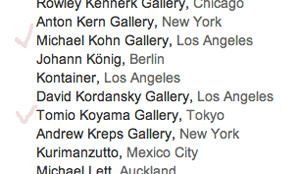
My galleries Michael Kohn and Tomio Koyama will be there. My old friend Joel Mesler will be there with his Rental Gallery, hosting Adamski Gallery, Eleven Rivington, Participant, Inc, and Black Dragon so I hear (B.D. is not on the press release, but that's the word on the street). Also, my friends at the Mandrake will install an entertainment module in the fair, a tidbit I gleaned from listening to the recent Bad at Sports podcast, an interview with Tim Fleming.
Despite the humanoid scale shift of this fair, there will be a ton of events going on this weekend that promise to play havoc with my need for studio monomania. My inner hermit is not happy.
And yet...
...it promises to be much fun, pues.
Miguel Marcos Gallery, the Install.

Here are some installation shots of a solo show of paintings 03:11 A very Nice Lightning Strike currently up at my gallery in Barcelona, Miguel Marcos.
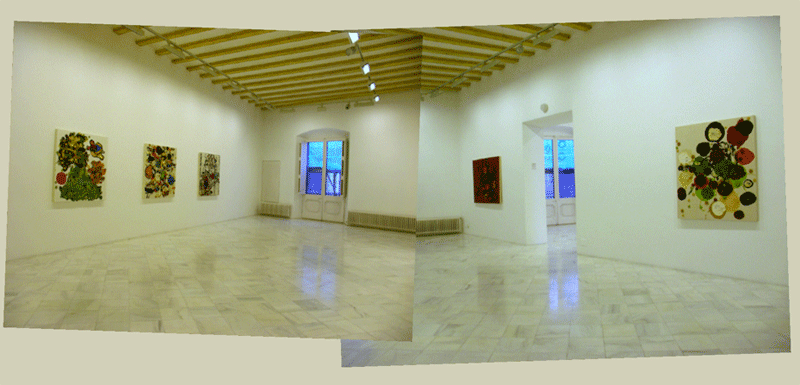
A majority of the paintings come from the work painted last summer, here's the link.
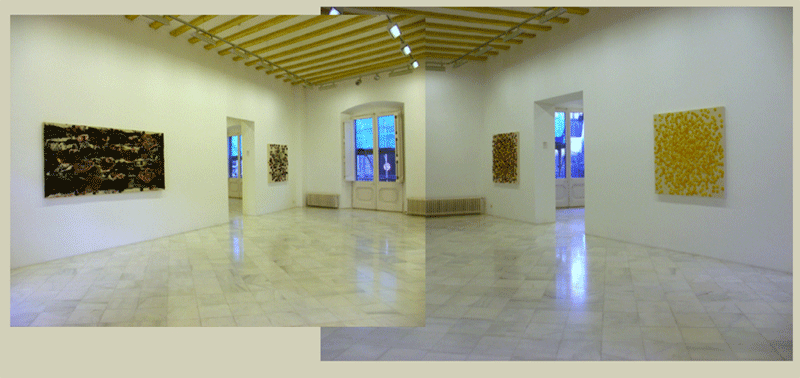
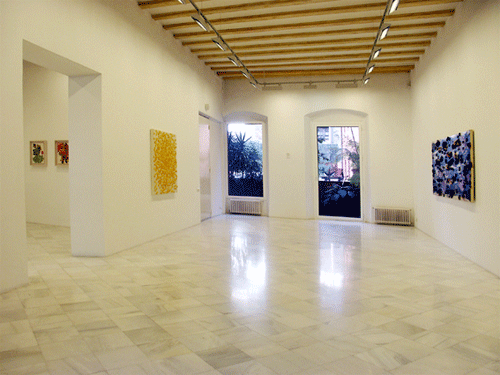
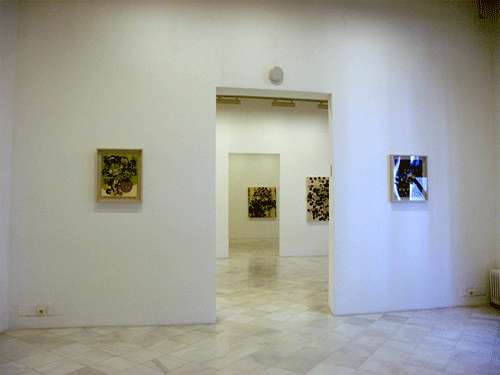
January 18, 2008
Mnemonic Device
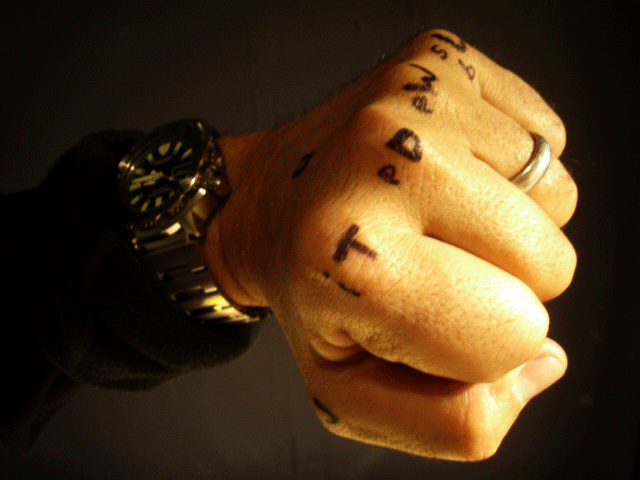
I found this sentence diagram of the preamble to the constitution (here), so tonight I thought I would create a mnemonic device and amuse my friends at Hop Louie with it.
Whazzup?
Touch fist?

Consider:
Democrats: J & W.
Republicans: T, D & L.
(...for the moment, at least.)
*
*
*
January 17, 2008
LA DriveBy
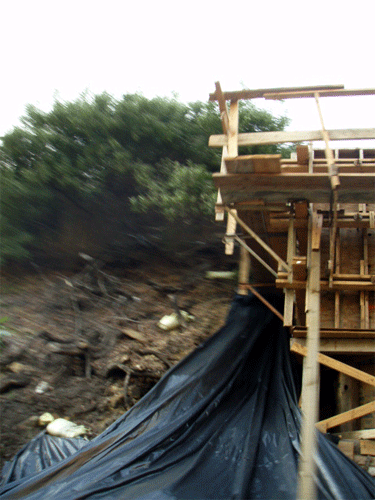
Between the tunnels on the 110 freeway north to Pasadena.
January 16, 2008
January 12, 2008
THIS IS NOT A HORSE

"A genuine work of art must mean many things; the truer its art, the more things it will mean. If my drawing, on the other hand, is so far from being a work of art that it needs THIS IS A HORSE written under it, what can it matter that neither you nor your child should know what it means? It is there not so much to convey a meaning as to wake a meaning. ? But a man may then imagine in your work what he pleases, what you never meant! ? Not what he pleases, but what he can. If he be not a true man, he will draw evil out of the best; we need not mind how he treats any work of art! If he be a true man, he will imagine true things; what matter whether I meant them or not?" (The Fantastic Imagination)
January 11, 2008
IMPORT ALL (e)
Yea, that was a trip.
My iPhoto file is about 12,000 strong, and this image stream was captured around 2,000 or so into the download as the idea dawned and I got my camera in place. I filmed it from a cheap video projector's light on a wall messed up with screws and holes, light pollution toned down halfway through, then reprocessed into the computer where the resulting file got bleached into an mp4 file, uploaded to YouTube and back to the computer into a smaller frame size (the smaller size and image speed compensated for the image degradation a bit). The image stream wasn't chronological in its entirety but it was so in chunks. Temporal modules. Mixed up and shuffled then flipped like a deck of cards or a sort of flip book of motion pictures.
What. A. Trip.
This is a kind of visual back story to the image stream of this blog; an off-hand, off-calendar anniversary present for five years of blogging.
The choreography was run by the import part of the program. Imagine having to click and drag all 10,000 fotos onto iMovie! That's a huge part of the charm for me, the random factor, a little bit of Anton Chigurh for you there. The sequence alignment with the music is as random as the proverbial umbrella on the operating table. I even like the goofs like the pause in (b or c) where I had to click the duplicate pop up to proceed.
Pues...
January 10, 2008
IMPORT ALL (a)
I was importing iPhoto images, and the photo stream was entrancing enough for me to flip open the camera to see if I could catch it.
Let's see if this works... this is about a fifth of what is in my file, so there might be four more installments if this looks good.
UPDATE:
That'll do.
(Stay tuned for more.)
78
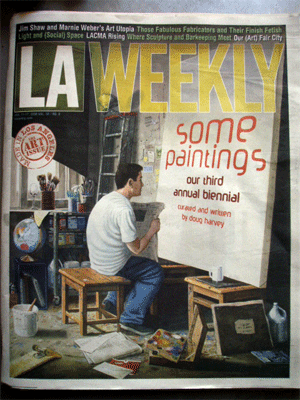
Doug Harvey has the cover and an article in today's LA Weekly featuring Some Paintings. He writes about the difficulty of curating a show of this kind, interesting stuff. Despite the huge net he cast (70+) --this city has so many artists, painters (my wild guess, how about 7000+?)-- it's inevitable that many good ones (I'm thinking of some friends) are not on the list.
Lists! The bane and fortune of this art world! Every artist wants and needs to be on "the list" and it is precisely its delimiting nature that puts teeth to the grinder. The tough thing to remember is that a list is temporal; like bread, milk and the morning paper.
Every day there's a new one.
Here's his intro and below the fold, Harvey's rat-a-tat-tat summary of the artists in the show:
Painting is dead. Painting isn?t dead. Painting is dead! No, it isn?t! Yes, it is! Isn?t! Is! Shut up shut up shut up shut up!!! Okay, now that we have that out of the way... Painting isn?t the denial-plagued zombie elephant in the room ? art theory is. It?s one of the lines Leonard Cohen left out: Everybody knows a work of art that doesn?t speak for itself is a failure as a work of art. Fortunately, in spite of the best efforts we critics have mustered to impose Artforum?s Rules of Order on the rabble, art ? and particularly the medium non grata of painting ? just won?t shut up.Painters in the contemporary art world, particularly those from L.A., have to maintain a chameleonesque indeterminacy about their artistic intentions ? be all things to all people ? or face ghettoization. Is this an abstract painting? Or a painting of a painting of an abstract painting, wink wink? It?s the emperor?s new clothes all over. The ultimate irony is that the emperor is actually decked out in an Amazing Technicolor Dreamcoat ? the plausible deniability cultivated by painters for the social sphere creates a temporary autonomous zone in the studio wherein a thousand flowers have blossomed. No one can pin them down, so they can get away with anything. The psycho art-market bubble hasn?t hurt production either.
So the question that generated ?Some Paintings,? the third L.A. Weekly Annual Biennial exhibition, isn?t whether or not painting is a dysfunctional plastic category, or what makes painting relevant in today?s global-a-go-go art world, or even ?How can curating a painting show make me seem clever?? It is, simply, ?What would it look like to have a broad-spectrum sampling of contemporary L.A. painting in one space?? We just got tired of waiting for some high-profile museum to put it together. How difficult could that be?
Pretty difficult, as it turns out. The hardest part has been the narrowing down. With an initial list of more than 300, and a dream of whittling the list down to a 60-something pr?cis (which ended up closer to ?90 under 90?), the shuffling and reshuffling of possible permutations ? looking for correspondences and polarities, designating redundancies, and trying to orchestrate a multiplicity of often-dissonant artistic voices into some vague coherence ? was just the prelude to the grim task of making the necessary cuts.
I don?t even know how many painters are in this show anymore, but it amused me that at the point I began to write these capsule profiles, there were 78 ? the same number as there are cards in a tarot deck, a pictorial system that condenses all the possibilities of life into one set of archetypes. Past, present, future ? all will be revealed! Perhaps there?s room for interpretation after all. Just cross my palm with silver.
In the past decade, Lisa Adams has gone from smart and sweet formalist abstraction to carefully rendered, spiritually and politically infused natural-history symbolism, building a deeply authentic interdependence of form and content....
The unconditional wealth of subtly nuanced pleasures from color, surface, scale, and compositional choices in David Amico?s industrially derived work reflects the eye of an artist who has lived in a Skid Row studio for decades and managed to keep actually looking.
...
I knew Michael Arata as a sardonic, community-building, public wiener-cooking daddy-o before I recognized his quirky conceptualist takes on painting (creating google-eyed entities from the negative spaces of lingerie models, for example) as one of the most original ? and funniest ? voices around.
...
Josh Aster continues to apply his light but masterful touch to a washy, colorful world of soft geometry. His recent work broaches the digital/natural schism, building layered planes of feral data, swarms of pixels and splashes of chaos into edgy infotainments that defy resolution. Or your mattress is free!
...
Hilary Baker?s pop-archetypal landscapes have a cartoon theatricality that goes beyond jaunty antics to embrace mystery, paranoia and alienation. Her recent works have become less and less populated by her cleaned-up Gustonesque eyeball entities ? opening an even more dreamlike space of unsettling enigma.
...
Lynne Berman has been rediscovering her painterly roots with a series of cool but frantic bruise-colored geometric abstractions on aluminum and delicate swarms of watercolor marks derived from research trips to Bosnia or a ?film tour? of Austria ? fourth-dimensional snapshots.
***
Gifted multimedia narrative populist Sandow Birk?s amazing ?Depravities? show at Cal State Long Beach in December used up his store of new Iraq-war paintings, but he dug out an early-?90s collaboration with graffiti artist Devin ?Relm? Flynn for ?Some Paintings.?
...
The elegant Modernist formalism of William Brice?s work from the past few decades is rendered blessedly free of quotation marks through a rare legitimate claim to a manifest destiny of the American imagination ? he came west to Chouinard during the Great Depression and never looked back.
...Heather Brown?s work trembles on the brink of rightness, like a Bizarro World Matisse ? flat, brutal renderings of figures in landscapes threaten to engulf the viewer in fragments of colored light. And once you?ve been transported to Bizarro World, ?right? is never the same again.
...
Having made her name with destroyed domestic interiors, Kristin Calabrese has gone on to produce one of the most idiosyncratic painting oeuvres anywhere over the past decade, ranging from faux-muralist social commentary to near-surrealist symbolism to stacks of colored boxes posing as geometric abstraction.
...
Steve Canaday crams grotesque eroticism and cartoon hot-rod nihilism into increasingly concealed Modernist geometric structures, establishing unsuspected common ground between Frank Stella and Big Daddy Roth. The Monsters of the Working Class, stripped of their exoticism, overrun the academy.
...
Carol Caroompas? punkadelic patchworks of archetypal gender conflicts played out by glamorous rock stars, clip-art domestics and B-movie exotics over eye-boggling textile patterns bring Pattern and Decoration through the looking glass of experimental narrative semiotics into the 21st century.
...
Karen Carson has come a long way from the austerity of her 1970s interactive minimalist zippered wall hangings to arrive at her recent spate of spectacular giant-Pegasi-in-the-sky-over-oblivious-us tableaux. I?d follow her anywhere.
...
Reconstructing his epic dysfunctional family history (alcoholism, CIA, lost candy fortunes) from fragments of Norman Rockwell illustrations, Scott Cassidy has hit upon a deeply personal and visually inventive vehicle for his old-master chops and droll humor.
...
With an uncommon and seemingly effortless spatial complexity, Mike Chang?s recent translations of ?80s pinball-machine designs into Abject Expressionist totems propose an unholy marriage between the new Geo-slackerism and Pop.
...
A couple of years ago, Brian Cooper?s creepily metastasizing site-specific upholstery sculptures were cropping up everywhere. His recent move to incorporate this iconography of containment and release into painting has resulted in works like Interiority, which manages to convey a hypnotically self-contradictory sense of place.
...
While a UCLA grad student, Daniel Cummings churned out a ton of huge hard-edge abstractions on paper. The size has been reduced and the edges have been blurred, but the dynamic spatial qualities and unorthodox palette remain undiminished.
...
Claremont grad student Walpa D?mark?s mythically (if ambiguously) charged, hypersaturated, densely packed confectionery landscape series epitomizes the best of the recent neopsychedelic trend in painting.
...
There are many painters who rely on computers as a tool or arbitrary gimmick, but the recent striated abstract paintings of Linda Day translate digital structures into painting language in a seamless way that embiggens both.
...
Exploring the dark, glittery underbelly of the feminine, Georganne Deen?s curdled sweets marry underground comix to high fashion with a finely decorative impulse that shatters the distinction between surface and depth.
...
Adrian de la Pe?a has been creating paintings (and assorted other artifacts) as one aspect of his large-scale, long-term visionary narrative ?Netsuke? ? about the imminent apocalypse-pre-emptive quartering of reality ? since being contacted by an orbiting entity known as DsurL in 1995.
...
Tomory Dodge?s blatantly painterly landscapes reconfigure the better aspects of ?90s British and German romanticism into something utterly local, and the images? recent rapid fragmentation only makes them seem more familiar.
...
Mark Dutcher?s skanky, sumptuous noir candy canvases seethe with giddy anguish articulated in a rapidly disintegrating pictographic language ? belying the artist?s exhilarating evolutionary momentum over the past five years or so.
...
Wounded Lion front man and Svengali Brad Eberhard ditched his old-school Squidism for fields of luminous jostling shapes that seem to be cohering briefly into partially unfolded schematics of the world ? room interiors, furniture, landscapes ? before moving on to rejoin the stained-glass Void.
...
How can you not trust the work of a guy who gave up a successful career in slick, beautiful geometric abstractions ? with a material and finish fetish only an L.A. surfer/abstractionist can authentically muster ? to produce verging-on-thrift-store paintings of circus animals crashing through the surf? You can?t. So when Tim Ebner recently morphed back into an abstractionist, I was right there with him.
...
Nancy Evans has been producing gorgeous, clever deconstructions of the Modernist grid and its figure/ground complications for years. Recently the figures have taken on a life of their own as gnarly bronze sculptures, but Evans still finds time to produce beautiful stains.
...
It?s hard to keep up with Amir Fallah?s rapid-fire stylistic shifts, but his ability to forge an individual identity by absorbing the polyglot visual din of the contemporary art world reflects his roots in the accelerated metabolism of graffiti culture.
...
The amazing thing about Llyn Foulkes is that in spite of his clear-eyed righteous indignation about the corporate degradation of human life, he is able to continue producing his luscious and quixotic Pop-Dubuffet relief paintings. He may be the only sane man in the L.A. art world.
...
I never got how Charles Garabedian fits that ?Bad? painting category ? complex arrangements of sophisticated chroma, draftsmanship and mythic/political content, often on an epic scale. If half the artists in L.A. could paint this bad, I could fill Track 16 three times over.
...
The atomized clouds of inverted language in Alexandra Grant?s pictures are almost too gorgeous for their own credibility as art-theory surrogates. Thank God.Beauty will get you through times of no words better than . . .
...
James Hayward reduces his practice to a handful of fundamental constituents ? color, surface, scale, gesture, occasional composition ? producing objects with Zen-like phenomenological suchness and the topological intricacy of a choppy ocean of delicious frosting. Transcendentally delectable.
...
The symmetrical cropping and shallow depth of field in Todd Hebert?s dreamy, cinematic airbrush landscapes of snowmen, water bottles, plastic owls, igloo coolers and other prosaic landscape elements result in a potent, unlikely hybrid of photo-realist technological fetishism and spiritualism-inflected Modernist abstraction.
...
Even while reaping the rewards of the ?80s Neo-Expressionism boom, Roger Herman was always operating in a more detached conceptual mode ? undermining grandiose scale and conspicuous paint application with often-arbitrary choices of subject matter and color.
...
The first ?Supersonic? show, in the Caltech wind tunnel, was a glut ? the only real relief was the installation of DIY painty-sculpty things by Gustavo Herrera, whose work continues to offer an offhand abundance of scraggy-ass beauty and humor.
...
Nobody seems to know where the hell David Hockney lives, but his deceptively easy, light-filled representational paintings and his affinity with improvisational approaches like plein-air landscapes figure about 98 percent Southern California, 2 percent northern England to me.
...
Artists often go to great pains to conceal the limited repertoire of strategies from which they assemble their range of products, but Dennis Hollingsworth has honed his deliberately minimal stock of elaborately sculptural wet-on-wet oil-paint applications to a virtuosic facility that disappears out of sheer gorgeousness.
...
Steve Hurd has consistently used his considerable painting chops against the bloat and bullshit that prop painting up as a meaningful activity in this complex and troubled society. His recent work turns his sardonic deconstructive wit on the mother of all bloat and bullshit ? politics ? to equally spectacular effect.
...
Charles Irvin?s multimedia tide of adolescent psychedelia is like a post-ironic version of Jim Shaw?s ?Billy? project, resulting in a considerably higher WTF quotient. Check his Web site for ?Tim Allen?s Republican Nightmare? and you?ll know what I mean.
...
Since Modernism?s forward momentum petered out, artists have become unglued in time. Compressing elements of Klimt, Schiele, Kupka, Rousseau, Hockney and O?Keeffe, Raffi Kalendarian mashes upopulent art nouveau stages for his languidly rendered figures to inhabit.
...
Charles Karubian?s vision of the world issoft, brown and weird. Rendering his recent, increasingly surreal tableaux in a carefully retro palette of umbers, ochers and pinks, he stimulates a sense of nostalgia for scenes no child would ever want to remember.
...
Local public-access star John Kilduff (Let?s Paint TV) has spent the past few years as a grad student at UCLA, expanding his vision and already-formidable improvisational paint-handling skills in preparation for total global domination . . . with blended drinks.
...
The intricate clusters of illustrational and decorative fragments that make up the recent, quirkily epic experimental narrative paintings of Tom Knechtel are rooted in earlier, simpler, but no less startling canvases.
...
Recently emerging from Cal State Long Beach, John Koller has been burning through the history of Modernist painting, incorporating what works for him and moving on to the next idiom. His recent gnarly architectural abstractions are his most well-synthesized to date.
...
David Korty?s washy, optically tweaked urban snapshots rank among the most compelling and successful attempts to revitalize the landscape-painting tradition in the past decade.
...
The complex, choppily layered landscape paintings of Annie Lapin reflect an awareness of the ways in which visual attention has been altered by the Information Age ? without the familiar preachiness or disinterest in the medium.
...
The fast, supple scenes rendered by Jasmine Little are torrents of visual information that collapse or dissolve into impossible spaces while turning an exquisite focus on unlikely and mundane details.
...
UCLA grad student Spencer Lewis depicts hazy, light-filled clusters of phenomena derived from unlikely collisions of information, using a sumptuous palette and an uncommon but perfectly suited dry-brush technique.
...
With an onslaught of tangled Impure Pop for Then People, Nick Lowe skipped grad school to emerge with one of the most convincing voices of the new millennium?s spate of drawing-based neopsychedelia.
...
Having spent years perfecting a Renaissance-type oil-glazing technique to depict the fleshly carnivalesque in various unconventional sexual tableaux, Monica Majoli had something of a breakthrough with her recent serene monochrome watercolor depictions of male figures completely encased in rubber.
...
Landscape sampler Constance Mallinson has been exploring a variety of hallucinatory recombinant strategies for a couple of decades, ranging from jarring postmodern patchworks of conceptual reference to Arcimboldo-like allegorical figuration to seamless, impossible aerial vistas.
...
I?m not sure for what highfalutin reason Daniel Mendel Black paints his sumptuous, bordering-on-vertiginous plaid-ass abstractions, but he digs Larry Cohen movies and Starcrash and hates the government, so whatever it is, it?s okay by me.
...
Bicoastal impasto fiend Sam Messer bears the stamp of someone who figured out his reason for painting early on and just kept going. His repeated depictions of Paul Auster?s manual typewriter, a praying monkey and various friends and family produce an oddly populist framework for his Soutinesque schmeer.
...
A curious omission from MOCA?s ?WACK!? exhibit, Robin Mitchell has recently been painting vibrant, scintillating abstractions that conflate the pulsing insectoid transmissions of digitized data transfer with the harmonious Om of Western spiritualist abstraction ? la Agnes Pelton.
...
Combining traditional graffiti style with new innovations, Man One has managed to parlay his street cred into an actual living, including running his own Crewest Gallery and co-organizing the shamefully painted-out Meeting of Styles L.A. River mural.
...
I wandered into USC grad student Dianna Molzan?s studio one night and liked what I saw: elegant formalist abstractions with a peculiar natural-history twist and a wobbly gravity.
...
The handsome rough-hewn paintings of Rebecca Morris possess a refreshing aggressiveness in their willingness to elbow enough room at the abstract counter to spread out, try things on for size, occasionally fall flat ? and breathe!
...
Ferus Gallery original Ed Moses has been steadfastly producing interesting abstract painting for decades, but is only now experiencing the revival of interest his aleatory splashes and wonky grids deserve.
...
No one has been able to tell me if Michael Olodort still meets any of the criteria for this show ? living; painting; in L.A. But I was so surprised and mystified when I came across his Humpty Dumpty paintings, I figured I?d give him the benefit of the doubt.
...
The marvelous three-dimensional trompe l?oeil paintings of Kaz Oshiro are marvelous feats of painting craft, brilliant conversation pieces, representational conundrums, and sly, subtly detailed gibes at their own peculiar social mobility.
...
The muted, layered symmetries in Chris Pate?s burlap paintings would seem like ironic commentaries on abstraction?s descent into decorator-prop hell, except he?s just so damn good he makes you believe again.
...
The formal and narrative generosity of Lari Pittman?s work is staggering.Though he never lets anyone off the hook with tasteful design choices or one-dimensional punch lines, his work rewards the most casual gallery hopper and the most deeply entranced art junkie with graciousness and wit.
...
In addition to several well-received bodies of work deriving from dog portraiture, M.A. Peers (my spouse, but it took Don Suggs to persuade her to be in this show) has produced large-scale abstract collages, culinary mosaics, noncommissioned portraits of midlevel corporate executives, and painterly depictions of yuppie-possessed teddy bears.
...
In addition to his droll, lovely and marketable Modernist film-stock assemblages, Carter Potter has produced a skanky parallel oeuvre using partially denuded abandoned sofas and poured latex house paint, taking the medium?s operative definition of paint applied to fabric stretched over a wooden framework to absurd literal extremes.
...
A couple of years ago, Monique Prieto abruptly reinvented her visual vocabulary from her familiar colorful biomorphic lava-lampism into a more literal, literary and visually scrappy sensibility. The text takes the burden of nostalgia and ambiguity, and the visual is revitalized.
...
United by its subject matter and the artist?s remarkable and ever-developing illusionistic technique, VICTORIA REYNOLDS? decade's worth of meat painting has run the gamut from tiny, ornately framed potroast icons to luncheon slice d?tourn?ment of high modernism ? always disturbingly beautiful.
...
Renaissance dude STEVE RODEN?s multivalent work is imbued with a profound familiarity with Modernist design principles and an avant-gardist appetite for getting lost in translation. But it was his paintings that first caught my attention, and which never fail to dazzle and mystify.
...
The ostentatiously thick paintings of ALLISON SCHULNIK have a European theatricality to them that may owe as much to her education as an experimental animator as to her affinities with proto-expressionists like James Ensor.
...
The sprawling multimedia oeuvre of JIM SHAW makes us sometimes forget that his encyclopedic knowledge of popular and esoteric culture was initially (and still periodically) manifested through smart, accomplished painting and drawing.
...
The gauzy, atmospheric airbrush paintings of BRAD SPENCE tackle pop-culture representations of philosophical truth, life after death, the therapeutic value of art, the nature of memory and shrimp cocktails in one of the historically freshest styles going.
...
Noted curator TYLER STALLINGS has also been steadily producing remarkable little oil and alkyd riffs on realism for a decade, ranging from creepy variations on Margaret Keane?s big-eye tradition to luminous unfinished domestic interiors to savvy multilayered deconstructions of the medium.
...
The recent exhibit of ?Potion Paintings? by LINDA STARK was a prototype for an aesthetic based on the magical resonances of the materials, which alarmed some followers of her laboriously built-up, minimally imagist oil-paint reliefs ? but no fear, her M.O. is to juggle multiple styles at once.
...
The monochromatic airbrush paintings of LAURIE STEELINK combine sweaty elements of tattoo design, heavy-metal fantasy art and van painting ? and end up as cool and elegant as film noir.
...
Even though DON SUGGS seems to have spent most of his career making fame-evasive shifts in style and media, his own persistence is beginning to catch up with him. Last spring?s OTIS survey (curated by me and Meg Linton) exposed the still center of the spinning Suggsian universe, and there?s nowhere left to hide! Ha ha ha ha ha!
...
Always an accomplished abstract painter, MARIE THIBEAULT?s recent work teeters between jumbled, unintelligible, silkscreenlike geometric schema and tumultuous postapocalyptic landscapes (that often strangely resemble a painting studio).
...
The unrepentant kitsch of psychedelia is nowhere as deeply and lovingly explored as in the work of DANI TULL, though his drooping stoners and hippie cavemen are only a fragment of his extensive multimedia oeuvre.
...
By insisting that their vernacular visual vocabularies are as valid as any other (and by looking just as good), the faux-outsider paintings of ESTHER PEARL WATSON beg the question of our condescension in assigning conditional significance to the work of folk artists.
...
The lightness of touch with which PATTY WICKMAN imbues her mysterious, simultaneously funny and spiritual allegorical realism is equaled only by the breathtaking virtuosity of her paint application, which tells a whole story in itself.
...
Young artists are just beginning to catch on to the breadth of work that gave L.A. international street cred in the pre??Helter Skelter? ?80s. Even though he was included in that landmark show, ROBERT WILLIAMS has continued to subvert the dominant hegemony with his meticulously rendered outlaw Americana cartoon surrealism.
...
I was surprised to discover that TOM WUDL?s busy allegorical pastiches are built from gradually accumulated layers of increasingly detailed improvisations, which make his intricately orchestrated, literate humanism just that much more extraordinary.
January 9, 2008
Some Paintings
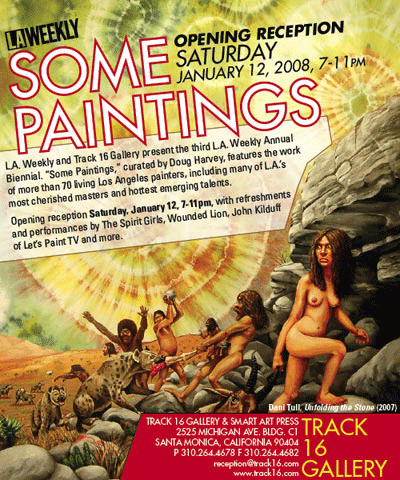
I'm fortunate to be one of the 70 (living) painters curator Doug Harvey invited to participate in this show at Track 16 at Bergamont Station this Saturday night. Whose company will I keep? I have no idea, other than a few friends that I know who have been invited too (Raffi Kalendarian, Brad Eberhard, David Amico, Jasmine Little... and Dani Tull, whose painting you see above gracing the invitation). Doug is a great writer here in LA (longtime LA Weekly arts reviewer) and he seems to love the carnivalesque, so it's no surprise to see that he has incorporated John Kilduff's Let's Paint TV performance shenanigans to the opening festivities. A big plus, the very excellent Wounded Lion (Brad and Raffi's band, the dudes mentioned above) will play at the opening too. Saturday night should be pretty insane, there are tons of openings across town, and parking at Bergamont Station is notoriously limited, so come by early.
Here's the press release:
?SOME PAINTINGS?
THE THIRD (2007) LA WEEKLY ANNUAL BIENNIAL
CURATED BY DOUG HARVEY
JANUARY 12?FEBRUARY 16, 2008?Some paintings give me diamonds, some paintings, heart attacks
Some paintings I give all my bread to, I don?t ever want it backSome paintings give me jewelry, others buy me clothes
Some paintings give me children, I never asked them for.?Jagger/Richards/Harvey
1 November, 2007?Track 16 Gallery is proud to present ?Some Paintings,? the third (2007) LA Weekly Annual Biennial, curated by Doug Harvey. Featuring the work of over 70 living Los Angeles painters, the exhibition is a long-overdue large-scale celebration of LA?s vital and ongoing exploration of the longest-lasting, most constantly reinvented medium in the fine arts. The show runs from January 12 through February 16, 2008, with an opening reception on Saturday, January 12 from 7 P.M. to 11 P.M. with refreshments and performances by The Spirit Girls, Wounded Lion, John Kilduff of Let?s Paint TV, and others.
The exact list of participating artists will not be officially revealed until the joint opening/publication of the annual LA Weekly Art Issue, but ?Some Paintings? will include works by the famous and the unknown, and range from pure abstraction to photorealism, and include available works from many of LA?s most cherished masters and hottest emerging talents. None of the work in ?Some Paintings? has been previously exhibited in Los Angeles, and most of it will be barely dry.
While not claiming to be exhaustive, or even comprehensive, ?Some Paintings? is an idiosyncratically personal and optimistic love letter spelling out the potential inherent in the world?s third-oldest profession and how it is currently manifesting itself in our city.
For more information please visit our website at www.track16.com.
combatINFOcenter
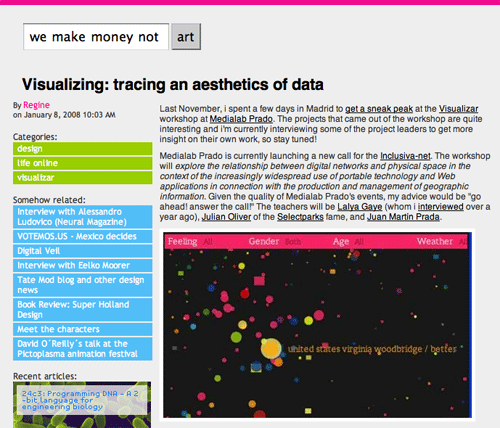
This post is a bookmark for a super cool blogpost called Visualizing: tracing an aesthetics of data* from We Make Money Not Art, "All you ever wanted to know about data visualization".
After spending some time in the Navy when I was a kid, working as an Operations Specialist in a place called Combat Information Center (thus, the title of this post as well as my YouTube moniker), and my first degree in architecture (an art and profession which is supremely positioned in our epoch to manage and interpret huge amounts of data... but unfortunately few if any academics in this particular field have focused upon this point of view), I have an abiding interest in data visualization. This blogpost is a great summary of the state of the art in this regard, something I want to spend some time with and click all the links provided.
I have a notion afloat of creating a version of a Combat Information Center (we called it C.I.C.), a kind of live-in installation (a couple of assistants, a dark room, spotlights, flatscreens, red lights, walls painted flat black...) where I crunch data (surf the internet among other sources tv and radio...), and represent findings in various modes (sculpture in the mode of architectural model making, drawing and painting...) for a month or so.
Ah, what fun that would be!
*I do wonder about the blogpost title, "...aesthetics of data". It is a strange formalism that seems to distract from the conceptual objective of the manipulation of data viz. Shouldn't it be rather, the "...aesthetics of data synthesis" or something like that?
Anyhoo...
January 8, 2008
Artists in Hiding
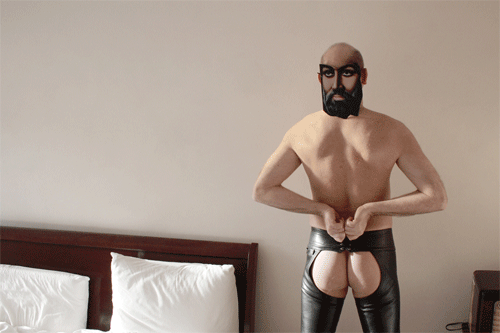
Sooreh Hera is a Dutch artist and former immigrant from Iran who is redefining the concept of bravery in the arts. From the weblog Islam in Europe:
Sooreh Hera says that the Islamic world holds a hypocritical attitude towards sex. Homosexuals in countries such as Iran and Saudi Arabia are treated roughly while it is quite usual for married men to have sex with other men. But that is kept hidden. Hera photographed many homosexuals, two of which were of Iranian origin. According to Hera they did not ant to be recognized and therefore wore masks. In order to denounced the hypocrisy in the Muslim world, she used the faces of Mohammed and Ali.
This image can get you killed in some parts of this world. The truth of this statement should be enough to compel a closing of ranks in the entire art community to defend the freedom of the artist who created it. But much of our art world is silent about it, hiding in plain sight. Indeed, her work has recently been removed from the Hague Museum recently. We in our splendid sophistication are currently unable to resolve the contradiction between multicultural tolerance and freedom of expression... in this case: the recognition of the full spectrum of our sexual nature. How is it that we, in the flower of our secular age, find it impossible to resist the constraints from the taboos of another religion?
Adam & Ewald, Seventh-day lovers"Practice of the homosexual nature is undesirable. Our guideline in this matter is the Bible." These are the words of a religious Dutch Member of Parliament, adding that if homosexuality were allowed the Bible might have mentioned 'Adam and Ewald' instead of Adam and Eve.
Religion always wants to control human sexuality, most prominently with a compelling taboo on homosexuality. The three major religions always fiercely opposed any deviant form of sexual practice: even today, within the Muslim world homosexuality is a capital offense.
I have tried to show a recognisable beauty of homosexuals, but also an alienating beauty that to many may be unimagined, or dishonorable.
I've posted this snip before in this blog, but the words from Benjamin Kerstein (in the wake of the previous graven cartoon image controversy) at Keshertalk are worth repeating:
...the concept of bravery as it pertains to the arts is now redefined.Courage, when considered of an artist, can mean one of several things, but it is the sense of risk that defines it.
It can mean a willingness to try what has not been done before. A chef may display courage, and risks the possibility that diners may gag on some brave new creation.
It can mean a willingness to risk the sacrifice of one's own career, like a pop musician being drawn to some other genre of music.
But it can no longer mean merely being offensive, engaging in political or social mockery, save in the case of a few certain targets, because now we all know where the risk is.
There is no risk in mocking politicians, now matter how intensively the abuse is served. There is no risk in mocking any establishements of American or Western culture- no harm will ensue. Performing the "Vagina Monologues" isn't an act of bravery, unless one does it in Saudi Arabia, perhaps. Every artist alive today now knows the limits: you can do this, which is as brave as taunting a stuffed teddy bear, or you can do that, which amounts to taunting a very hungry very uncaged bear.
Bravery, to an artist, is now an all or nothing thing. Leave the repressive regimes alone, and all your efforts, no matter how avante garde, provocative, or just plain offensive your work is, and you are just pretending at courage. Cross the line and say something about Islam, and your life is one the line.
All the gray areas have vanished in a week. It's as if mountaineers were to suddenly be faced with only two choices: Everest, or the plastic rock climbing wall. Long after this dies in the news, its going to echo in the heads of every writer, poet, standup comedian and performance artist- go after any target but the big one, and you're only faking it, playing it safe. It doesn't matter whether they admit it or not, whether they rewrite their material or not, it will be there, in their minds, and it will affect things. Even Margaret Cho knows she can curse Bush all she wants, but she'd better keep her mouth shut about you-know-who if whe doesn't want to bleed to death in the street. Speaking Truth to Power is only a heroic act if Power chooses to make an issue of it.

And here's the last paragraph by Matthew Campbell in a recent Times Online article:
For her part, Hera, who fled Iran seven years ago, says she has ?no regrets?, particularly when she thinks about the young men and women being hanged there for offending the country?s code of sexuality. ?I do it for them,? she said, ?for the boys and girls with no freedom in Iran.?
That the philosophical problem of the graven image is one that has to be drawn by fundamentalist Islamists with a sword... well, that is a fine illustration of a larger problem within a Muslim world that is struggling with modernity. We should help them in this evolution.
There already exists a rich history of portraiture of he who is "the most perfect man": the Mohammed Image Archive.
*
*
*
Didn't Zadoz tell you about the Apathetics?
It's a disease.
And it's slowly creeping through all the Vortexes.
That's why Zardoz made you grow crops... to feed these people.We can't support them anymore.
Apathetic or Renegade... take your choice.(Zed tosses the apathetic woman in frustration and anger.)
Yes, a bit frightening, isn't it?
*
*
*
UPDATE:

Stories like this abound, I'm posting it to convey the intensity of what's happening over there.
January 5, 2008
More Traffic Crossings
I've blogged a Hanoi street crossing before, now I have the beginning of a collection of a type.
via Boing Boing both times?
January 4, 2008
Linky
Linky, link, link, link, link.
I followed a trail of breadcrumbs through Jameson to Zardoz. For a while there I didn't know what he meant by utopia or even anti-anti-utopia... but now I think we just might have something here. A YouTube search took me to this scene fast, the encounter with the apathetics. Could this be Jameson's vision of the consequence of globalized late capitalism?
One of them, at least.
I personally like the Renegades at the Starlight Club.
Ahora
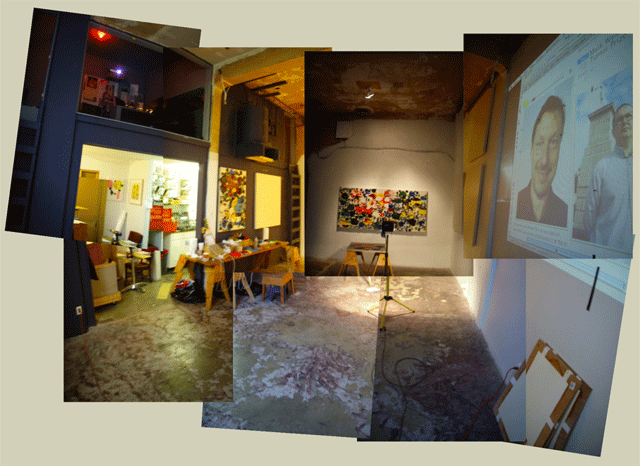
Today's tomfoolery: setting up the projector to play YouTube/VideoPodcasts/Movies, etc. Up on the wall: Bad at Sports Podcast 119 featuring James Elkins on Globalism, interesting stuff.
January 3, 2008
Saucer Eyed
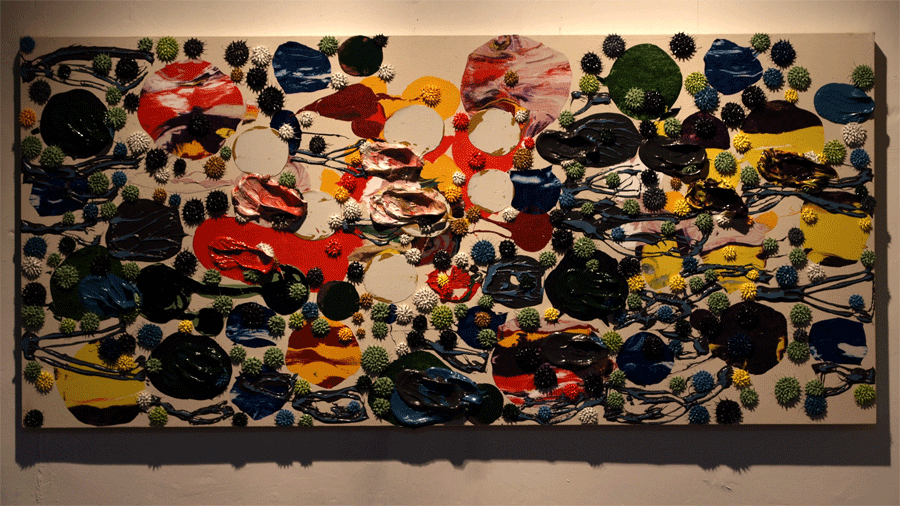
Saucer Eyed
ww#284
2007
44"x96"
Oil on Canvas over Wood Panel
This painting will go to the LA Weekly show "Some Paintings",
a humongous group show... with around 70 painters from LA... more about that later.
Afterward, I get to hang this one in our house in Echo Park. More about that later of course.
Call It, Friend-O
(Kelly Macdonald as Carla Jean Moss)
It was a brutal movie to watch in the first few hours of 2008.
The first thought that arose in my mind as we exited the Cinerama Bowl:
If space and time are one thing, then why can't the world be governed both by G-d and Chance at the same time?
Here are a few more notes from where that thought came from:
The movie is about a G-d centered world:
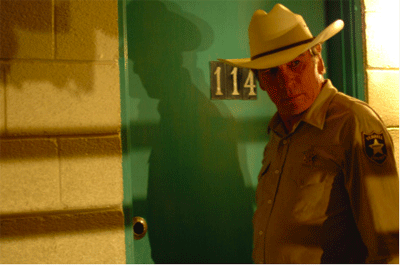
(Tommy Lee Jones as Ed Tom Bell)
Loretta Bell: How'd you sleep?
Ed Tom Bell: I don't know. Had dreams.
Loretta Bell: Well you got time for 'em now. Anythin' interesting?
Ed Tom Bell: Well they always is to the party concerned.
Loretta Bell: I'll be polite.
Ed Tom Bell: Okay. Two of 'em. Both had my father. It's peculiar. I'm older now then he ever was by twenty years. So in a sense he's the younger man. Anyway, first one I don't remember so well but it was about money and I think I lost it. The second one, it was like we was both back in older times and I was on horseback goin' through the mountains of a night. Goin' through this pass in the mountains. It was cold and snowin', hard ridin'. Hard country. He rode past me and kept on goin'. Never said nothin' goin' by. He just rode on past and he had his blanket wrapped around him and his head down and when he rode past I seen he was carryin' fire in a horn the way people used to do and I could see the horn from the light inside of it. About the color of the moon. And in the dream I knew that he was goin' on ahead and that he was fixin' to make a fire somewhere out there in all that dark and all that cold, and I knew that whenever I got there he would be there. Out there up ahead. And then I woke up.
And the movie is about a world governed by chance:
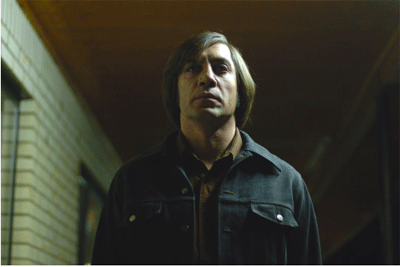
(Javier Bardem as Anton Chigurh)
Anton Chigurh: What's the most you ever lost on a coin toss.Bardem's Chigurh flips a coin to determine whether he will kill or not. He forces his victim to choose his fate. Later, as he inflicts this procedure on another victim, Llewelyn's wife Carla, she responds as any human being would:
Gas Station Proprietor: Sir?
Anton Chigurh: The most. You ever lost. On a coin toss.
Gas Station Proprietor: I don't know. I couldn't say.
[Chigurh flips a quarter from the change on the counter and covers it with his hand]
Anton Chigurh: Call it.
Gas Station Proprietor: Call it?
Anton Chigurh: Yes.
Gas Station Proprietor: For what?
Anton Chigurh: Just call it.
Gas Station Proprietor: Well, we need to know what we're calling it for here.
Anton Chigurh: You need to call it. I can't call it for you. It wouldn't be fair.
Gas Station Proprietor: I didn't put nothin' up.
Anton Chigurh: Yes, you did. You've been putting it up your whole life you just didn't know it. You know what date is on this coin?
Gas Station Proprietor: No.
Anton Chigurh: 1958. It's been traveling twenty-two years to get here. And now it's here. And it's either heads or tails. And you have to say. Call it.
Gas Station Proprietor: Look, I need to know what I stand to win.
Anton Chigurh: Everything.
Gas Station Proprietor: How's that?
Anton Chigurh: You stand to win everything. Call it.
Gas Station Proprietor: Alright. Heads then.
[Chigurh removes his hand, revealing the coin is indeed heads]
Anton Chigurh: Well done.
[the gas station proprietor nervously takes the quarter with the small pile of change he's apparently won while Chigurh starts out]
Anton Chigurh: Don't put it in your pocket, sir. Don't put it in your pocket. It's your lucky quarter.
Gas Station Proprietor: Where do you want me to put it?
Anton Chigurh: Anywhere not in your pocket. Where it'll get mixed in with the others and become just a coin. Which it is.
Carla Jean Moss: You don't have to do this.Chigurh smiled because he had already chosen for himself differently. He opted out of the human race. In that moment that he had turned away from G-d, he became nature and thus both the subject and operative (perpetrator) in regards to the chance that governs nature. He must have been mocking the Gas Station Owner when he said: "1958. It's been traveling twenty-two years to get here."
Anton Chigurh: [smiles] Everybody says that.
How does destiny exist in a world of chance?
In the next line (not in the script I found online, but it was in the movie. I'm curious to see if it is in the book), he says: "I got here the same way that coin did." Did he identify himself with that coin or not? Why would a person who opted out of the human race choose to inflict chance on the G-d fearing? What would it matter to a random world?
Novelist Walter Kirn in the NY Times called Chigurh a "...self taught psychopath" and this regular contributer to the NY Times Sunday Book Review even seems to admire this monster: "Chigurh has achieved an evil state of grace that the ambivalent masses will never know.". He's the figure that roils all the Coen Brother's films, the remorseless terminator, that relentless, impersonal force of nature like Katrina or cancer or someone who runs a red light into your passenger door. But is Anton Chigurh like the others? No, Chigurh is a special kind of monster, one who torments those who choose the G-d centered world, those who choose life and the special status of humanity. The randomness of chance that he inflicts on his victims is personal. There is an anger in him that can only come from a disillusioned believer.
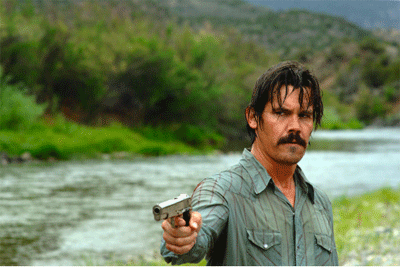 (Josh Brolin as Llewelyn Moss)
(Josh Brolin as Llewelyn Moss)
And throughout the movie, there is something heavy about how each world, G-d centered and Chance, contaminates each other. You can see it here:
(Tommy Lee Jones' Ed Tom Bell)
Ed Tom Bell:I always knew you had to be willing to die to even do this job - not to be glorious. But I don't want to push my chips forward and go out and meet some-thing I don't understand.And here:You can say it's my job to fight it but I don't know what it is anymore.
...More than that, I don't want to know. A man would have to put his soul at hazard.
He would have to say, okay, I'll be part of this world.
(Josh Brolin's Llewelyn tells his wife that he is going out and into some trouble he had steered clear of earlier:)
Carla Jean Moss: Llewelyn?
Llewelyn Moss: Yeah?
Carla Jean Moss: What are you doing, baby?
Llewelyn Moss: I'm going out.
Carla Jean Moss: Going where?
Llewelyn Moss: There's something I forgot to do, but I'll be back.
Carla Jean Moss: And what are you going to do?
Llewelyn Moss: I'm fixin' to do something dumber than hell, but I'm going anyways.
*
*
*
I have already ordered the Cormac Mccarthy book from Amazon this week.
*
*
*
Post Script:
An old friend called to touch base over the holidays. We're both artists and we talked shop, a little gossip. And then we rubbed a worry stone over our situation as artists. Would we get recognition? We're doing well enough, but life is still hand-to-mouth... when will it ever get better? Who were we to badmouth or otherwise speak dismissively of other (established) artists when we ourselves are howling in the wind? What will all this effort making art mean after we pass away?
I didn't tell him but I was thinking about "No country for Old Men" at that moment. It was an old theme of mine, of how all artists have to believe in our projects, especially if these life's works are vision-based, inspired in the deepest sense. If our vision is real, authentic (a contested word I know), we have to believe in them whether others around us do or don't... right down to the bitter end.
I don't know how there could be art in a world of chance. If meaning has no ground, neither does art. Perhaps one way to understand the legacy of Marcel Duchamp is to see him as a species of Anton Chigurh. The coin flips in the air: "Call it, friend-0." Artists like that have opted out of the G-d centered world and accepted the one ruled by chance.
Or have they?
Once long ago in fourth year architecture school, I was left to craft my own design project, so I decided to create a city plan using a set of random rule sets: toss of the dice, shards of paper tossed onto a topographic map, Ouija boards with modified icons, things like that. After some effort, I realized that random generation systems themselves had to be designed. Try as I might, design could not be designed out of the system. If I had to proceed, I would have to continue as a kind of concealed farce at worst and at best as a kind of theater.
Artifice. That's the word I was looking for. Every argument, every story inevitably leaves something out. Knowledge and control of this tendency is a special kind of artifice. Odysseus was called by Homer the great artificer. There is a kind of cunning in the theater of art apparently ruled by chance. Misdirection. A magic trick is finally anything but a trivial thing.
It's not that I believe that Duchamp was a monster, not at all and to the contrary. And furthermore, in saying this, it's not that I believe that there are no monsters in the art world, artists or otherwise... of these there are many. But there is a species of Chigurh in the art world who live by the rule of chance and yet also live in an anti-relation-yet-still-in-relation to a G-d centered world, a world where human life is precious and freedom is sanctioned by removing it from the meddlesome hands of man and delivering it for safekeeping into the hands of G-d.
All of this stuff was floating through my mind -too fast to convey at the time- as we rolled our worry stone over in the conversation, my friend and I over the telephone. We artists all, live at a precarious place. Everyone lives with this anxiety in the art world from collectors to galleries to artists of all stripes and stations. Artists that make it to the top ten of success arrive there not only for the undeniable skill and talent but also with no small measure of luck and chemistry too, this we all know. This is very unnerving, needless to say. The freedom that made art as we know it possible in the first place is both exhilarating and fraught with anxiety. You can't have one without the other. As Lao Tzu sez:These two are the same
But diverge in name as they issue forth.
Being the same they are called mysteries,
Mystery upon mystery-
The gateway of the manifold secrets.
If you want G-d to save your ass, that also means that you want out of the covenant system that has bound us since the beginning of time. It means that you want to remain a child, that you renounce freedom but you would prefer to remain exhilarated... but how could this be possible? Living free means that we hazard the world of chance, it means that these two worlds intersect in life.
Trying to wrap our heads around space/time is tough but we now know that it is true. It is not much of a stretch to hold the idea that faith and skepticism can be two sides of the same thing, that G-d and chance could be inseparable, that as I tried to flush out in Personal, Difficult Things is that there might be a purpose in our drive away from the G-dhead, that in our bungee jump away from G-d and toward death, that there might be something to learn in the world, that this might be the very purpose of art in a G-d centered world: to learn something of life along the way.
To be an artist, one would have to put his soul at hazard. He would have to say, okay, I'll be part of this world.
*
*
*
Quotes from IMDB
Script
